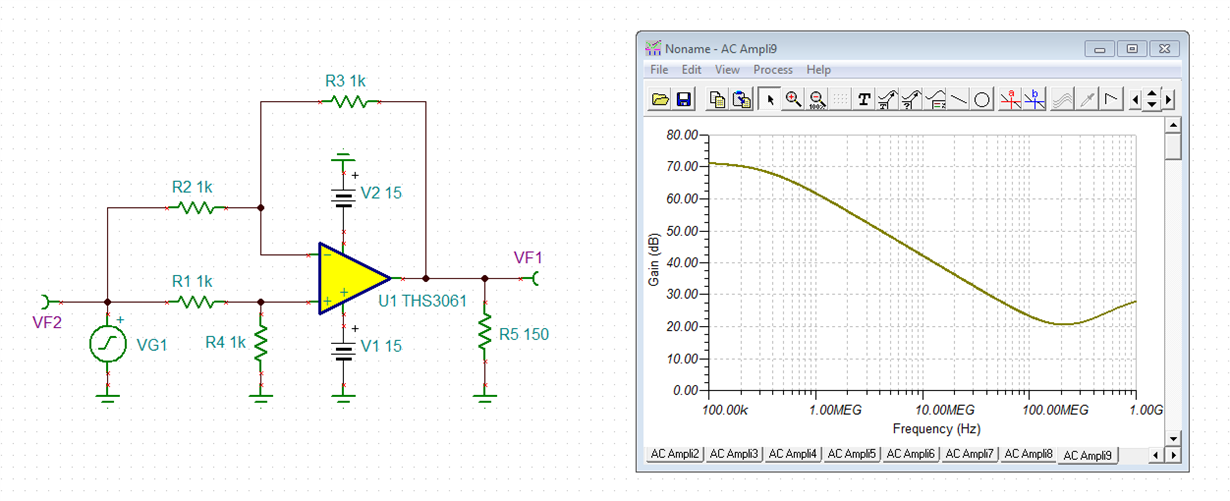Other Parts Discussed in Thread: THS3062, , THS3001, LM6171, THS3491, OPA694, OPA2694, TINA-TI
The CMRR plot for this part seems odd, and we wonder if there is an error.
See www.ti.com/.../ths3062.pdf, Fig 31 on Page 11.
We are interested in the CMRR at 10 MHz, and do not understand how the CMRR for THS3061 and THS3062 can be so vastly different, given that these are exactly the same Op-amp, just that one is a single and one is a dual. Specifically :-
THS3061, CMRR = 20 dB at 10 MHz
THS3062, CMRR = 52 dB at 10 MHz
It is hard to believe that the dual op-amp version should have a CMRR 32 dB better than the single OP-amp version?? Is there a mistake here?
Also puzzled as to why the CMRR should should get BETTER at >100 MHz, but not of concern to us. In contrast other OP-amps like THS3001 look as expected, with CMRR getting steadily worse at increasing frequency..
Getting back to the primary question, can anyone confirm that CMRR at 10 MHz is only 20 dB for THS3061, but 52dB for THS3062? And if this is true, then why so different?
FYI, here is why the CMRR matters to us. We need to build a unity gain differential amplifier. Both inputs will see a slightly distorted 10 MHz signal, with slightly different phase and amplitude. We need to look with great accuracy at the difference between these two 10 MHz signals that have similar phase and amplitude, thus the need for a differential amplifier circuit. This turns out to put severe demands on the CMRR performance of the op-amp. This is easily seen if the two signals were identical, in which case any observed output from the differential amplifier, on account of imperfect CMRR, would be an error in what we are measuring. I naively first used a 100 MHz voltage-feedback LM6171, an old favorite of mine that has no trouble reproducing a 10 MHz waveform with relatively low distortion. However, in this differential amplifier application it was a complete failure, producing a noticeably distorted difference signal, when I know that the difference signal is actually a pure sine wave, as confirmed by differential measurement using 2 channels of an oscilloscope. The THS3061/3062 seem like a good choice, but only if I can resolve whether the CMRR at 10 MHz is 20 dB or 52 dB! If anyone can suggest a better op-amp for the application, then that is also of interest. Low distortion is also a requirement.
Colin


